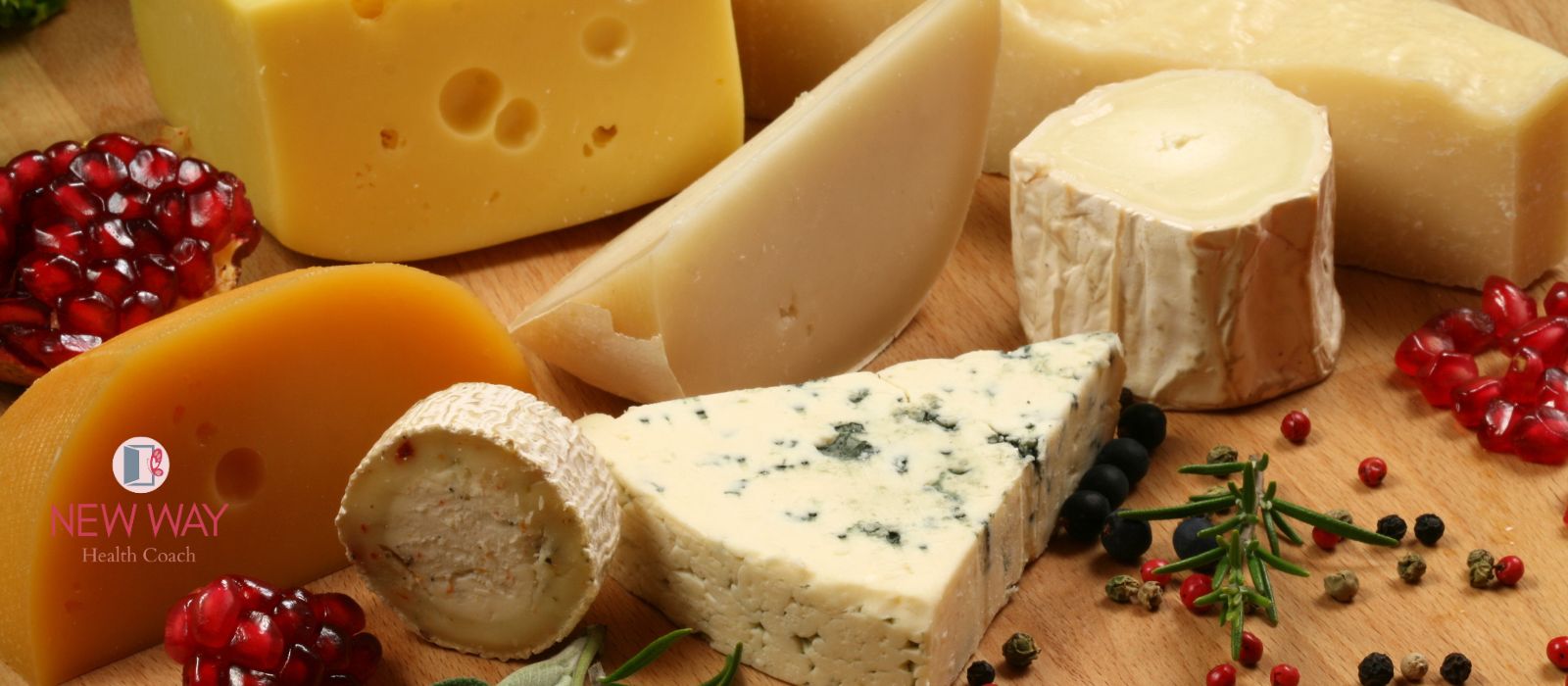The Science Behind Your Dairy Addiction
Ever found yourself hovering over a cheese platter, convincing yourself that “just one more slice” won’t hurt? Or maybe you’ve tried to cut back, only to find yourself fantasizing about melty, gooey, irresistible cheese on everything? If so, you’re not alone—cheese is straight-up addictive, and science backs it up!
As a Functional Medicine Health Coach, I see this all the time and have experienced it myself. Clients tell me they can cut back on bread and pasta, even say no to coffee, but cheese? That’s a different story. Let’s break down why cheese has such a powerful hold on your brain (and taste buds) and what you can do about it.
- Cheese is a Dairy Drug (Casomorphins, I See You!)
Cheese contains a protein called casein, which, when digested, releases casomorphins—compounds that have an opioid-like Why Can’t You Quit Cheese? effect on the brain. Yep, you read that right! These little guys latch onto dopamine receptors, triggering pleasure signals similar to (but much milder than) narcotics. No wonder it feels so good to eat cheese!
- Fat + Salt = The Perfect Craving Storm
Our brains are hardwired to seek out calorie-dense foods, and cheese is the ultimate fat-salt combo. It’s creamy, satisfying, and gives you a dopamine hit, reinforcing the craving loop. The more you eat, the more your brain wants.
- The Emotional Connection: Cheese = Comfort
Think about it—some of the most nostalgic and comforting foods involve cheese: mac & cheese, grilled cheese sandwiches, pizza, nachos. From childhood memories to stress-induced snacking, cheese becomes more than just food—it’s a source of emotional support.
- Umami, Baby!
Cheese is packed with glutamates, which activate the umami taste receptors on your tongue. This deep, savory flavor makes food extra crave-worthy, keeping you coming back for more.
- Dopamine: Your Brain’s Reward System in Overdrive
Cheese triggers dopamine release, reinforcing a cycle of cravings and reward. Your brain loves pleasure, and cheese delivers—so your body keeps asking for another bite.
So, What Can You Do If You Want to Cut Back?
If you feel like cheese has a little too much control over your cravings like I did, here are a few strategies to loosen its grip:
✔ Find satisfying swaps – Nutritional yeast, cashew-based cheeses, or avocado can provide creaminess and umami without the dairy dependency.
✔ Increase your protein intake – Sometimes, cheese cravings come from your body seeking protein. Try nuts, seeds, or plant-based proteins.
✔ Balance your gut health – Cheese cravings may be influenced by gut bacteria. Supporting gut health with fiber, fermented foods, and probiotics can help shift cravings over time.
✔ Go slow, not cold turkey – Cutting back gradually instead of going cold turkey makes the transition easier. Start by swapping in non-dairy options in one meal at a time.
✔ Recognize the emotional attachment – If cheese is your comfort food, explore other ways to satisfy emotional cravings—whether through self-care, movement, or creative outlets. I love adult paint-by-number!
Final Thought: Enjoy It—Mindfully
Cheese doesn’t have to be the enemy. If you love it, enjoy it—but in moderation and with awareness. The key is understanding why your brain is hooked so you can make conscious choices instead of giving in to autopilot cravings.
So, tell me—what’s your biggest cheese weakness? Are you Team Brie, Cheddar, or Gouda? Drop a comment and let’s chat about it!


